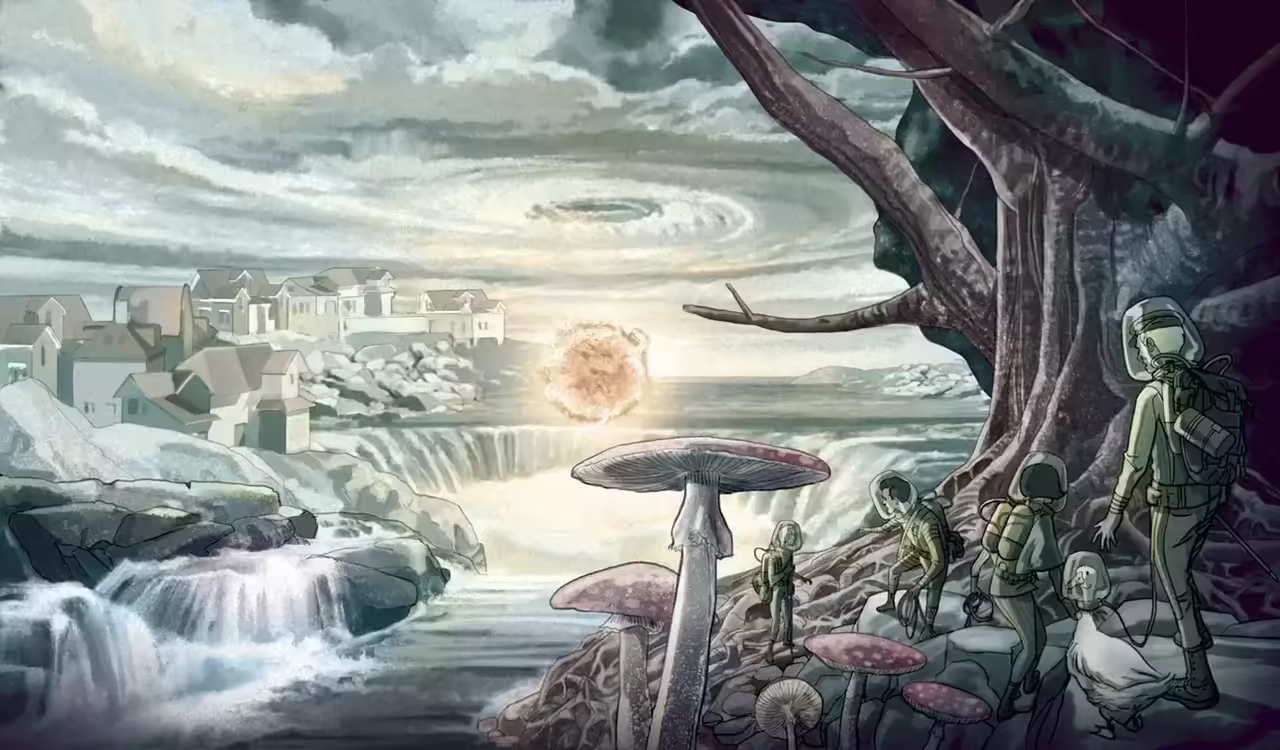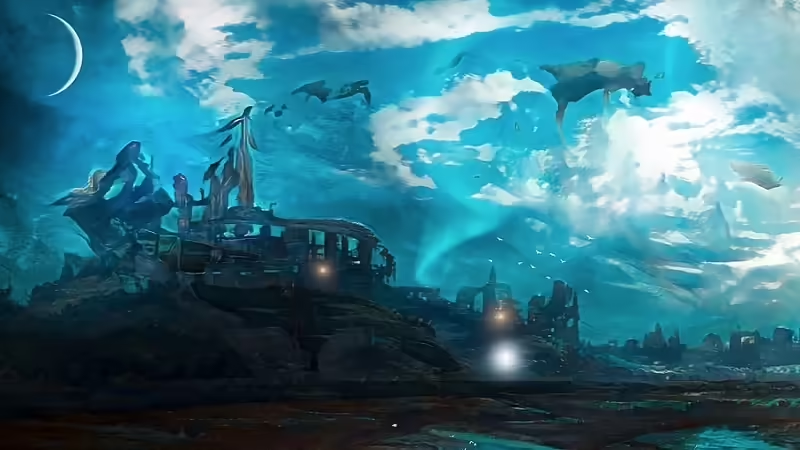
What do we know about the underworld?
All human religions give a role to the underworld in the construction of reality. Whether it is the home of antediluvian monsters, hidden civilizations, mythological constructs or eternal torment for those who serve evil, the earth beneath our feet is full of life – and not necessarily to the benefit of mankind.
We humans have gradually scratched the surface, but our range of exploration is surprisingly small: in fact, the largest hole dug by mankind barely reaches 12 kilometers deep, while its diameter exceeds 12,000. In other words, we have barely penetrated to a thousandth of the depth of the earth. What lies below is unknown to all.
Most scientific institutions state that, in any case, it is highly improbable that complex creatures can survive far below the surface due to the low oxygen levels found there. The hollow earth or inner surface theory, on the other hand, states that in fact oxygen levels far below the surface, thanks to large holes or tunnel systems, are equal to those at the surface, so that not only life, but complex life, could survive there.
However, it is not necessary to go that far down. In cities and mines, man has often resorted to the use of the immediate subway regions to gain space, obtain mineral resources or simply to explore. These “small” subway regions have a whole series of legends and stories, some more verifiable than others, which give free rein to the human imagination and encourage the idea that there is much more than inert matter beneath us.
Some modern apparitions
The main places where these legends arise are public transportation systems, such as subways or subway trains. There are numerous legends that speak of ghosts, spirits and the like haunting these places to terrorize the living, but in this article we will not concentrate on them. We will talk, instead, about the giant rats that live in these tunnel systems, as well as the legends of crocodiles that feed on homeless and inattentive individuals they find alone in these systems.
Giant rats are a fact: these animals have increased in size in recent decades and already represent a threat to children or the elderly, and even to a healthy adult, as they can transmit rabies. Crocodiles, on the other hand, are an American urban legend that has never been verified, but from time to time they are blamed for the mysterious disappearance of some people in cities.
However, the legends go beyond that. There are records of mysterious deaths on the London Underground that leave their victims disfigured and with horrible cuts, as if caused by some beast hiding in the tunnels. Likewise in Sabadell, Spain, in 1981 some alleged snakes up to 4 meters long appeared inhabiting the sewers, a version that the authorities denied but hundreds of witnesses affirmed.
In 2014, a Russian probe called “Klavesin” found what appeared to be a gigantic creature 1.5km deep in some caves in the Arctic Ocean. While it was the expedition team itself that declared the find, there are no images and the probe was too damaged (by the creature’s attack) to provide more information. In this case it is not a subterranean creature, but an underwater one, but it lived in cave systems and not in the open sea.
Cannock Chase, in the western part of England, is another example of a possible subway creature. There, the inhabitants have had visions of strange creatures for decades, and pets in the region are systematically disappearing. One of the most commonly heard proposals is that it is an unknown creature or creatures living in the large mining systems abandoned centuries ago, and it has even been proposed that it is a subspecies of humans, who hid, for unknown reasons, in the mines and changed their way of life, their language and even their physical characteristics to adapt to their new environment.
Subway legends of the past
This is not the first version that would speak of intelligent life under the earth. In addition to Agartha, the mythical civilization that would extend into the inner folds of the earth, many societies refer to subterranean worlds: the Hindus speak of the Nagas, man-headed serpents who possess the gift of intelligence and have developed a complex society underground, similarly, the Chinese dragons are more intelligent snakes living in the immense cave systems of the Himalayas.
Whole villages – abandoned – are also found underground in the mountains of central and western China. With the invasions of the nomads, the inhabitants of these regions hid in the caves and many disappeared without a trace. Some people claim that they founded subway cities or, more interestingly, that they found hidden passages to hidden realms beneath the earth (perhaps the mythical kingdom of the Nagas, or Agartha itself?).
What lies in the depths?
The truth is that, at least at the microscopic level, the depths never cease to amaze scientists. Recently, gigantic colonies of nematode worms were discovered in a region where there is supposedly not enough oxygen for any animal to survive.
Also in the depths of mines, bacteria called matusalem microbes have been discovered, because they are able to reduce their metabolism to negligible rates in order to ration the little energy available. These bacteria live far apart from each other (only 1000 were found in a cubic centimeter, when millions are normal) and hardly reproduce, scientists believe that they could be the oldest living creatures on earth, their life rate is so slow that it can hardly be distinguished from death.
But the findings go further. The Movile cave in Romania has been isolated from the rest of the world for 5.5 million years. Its animals do not consume any nutrients from outside, making it the first terrestrial ecosystem that does not depend at all on sunlight for its survival.
All the energy required is obtained from the oxidation of hydrogen sulfide that seeps through the walls. However, its complex inhabitants (which include arthropods, mollusks and nematode worms) still require atmospheric oxygen, which, although at very low levels (less than half that of the surface) exists in the cave.
But this last limitation does not seem to be definitive either. New species found in the depths of the Mediterranean do develop in environments completely deprived of oxygen, and although they are simple species, they demonstrate that the eventual evolution of multicellular beings in an anoxic world is possible, and perhaps even of intelligent animals (thanks, mainly, to the substitution of mitochondria by other hydrogen-based organelles).
In view of this, the above-mentioned legends are not so unrealistic. Perhaps evolution got ahead of us, perhaps at this very moment, somewhere in the subterranean world, a character of some unknown species is commenting on the possibility that on the surface, in that remote place full of lethal radiation and toxic gases, life may exist.
Mountains exist beneath the earth’s surface
In recent years, surprising discoveries have been made about the existence of mountains beneath the Earth’s surface. These subway structures have been found all over the world, from Australia to the Himalayas, and have challenged previous notions about how mountains form and how the Earth’s crust works.
One of the reasons these subway mountains have been difficult to detect is because they are covered in rock and sediment, and are found at great depths. However, through advanced mapping techniques and seismic analysis, scientists have been able to detect these structures and study them in greater detail.
One of the most surprising findings has been the existence of mountains beneath the sedimentation plain in Australia. These subway mountains, which are about 700 kilometers long, were formed about 100 million years ago when the Australian tectonic plate moved northward and collided with another tectonic plate. The impact caused the formation of a mountain range, which was buried under sediments as the sedimentation plain formed above it.
Another important discovery was the mountains beneath the Himalayas, which were discovered in 2015. Scientists had previously assumed that the Himalayan mountains were formed solely by the collision of the Indian tectonic plate with the Eurasian plate, but the discovery of these subterranean mountains suggests that there were other geological processes at play.
The existence of these subterranean mountains has also challenged previous understanding of how mountains form and how the Earth’s crust works. Scientists have discovered that the process of subway mountain formation may be much more complex than previously thought, involving a variety of different geologic processes.
In addition, the existence of these subway mountains has important implications for natural resource exploration and nuclear waste management. While these subway mountains can provide opportunities for valuable resource extraction, they can also present significant challenges for safe nuclear waste storage and seismic risk management.
In 2018, a team of scientists discovered a subway mountain range beneath the Atlantic Ocean, stretching from the coast of Africa to the coast of South America. These subway mountains, called the South American Cordillera, were formed about 100 million years ago when the South American tectonic plate moved eastward and collided with the African plate. The impact caused the formation of this mountain range, which was buried beneath the ocean as oceanic crust formed above it.
In 2019, a study published in the journal Nature Geoscience revealed that there is a subway mountain range beneath the western United States, stretching from California to Montana. This subway mountain range, called the Rocky Mountain Range, was formed about 50 million years ago when the Pacific tectonic plate moved eastward and collided with the North American plate. The impact caused the formation of a mountain range, which was buried under sediments as the Colorado River basin formed above it.
The existence of these subway mountains has also led to new questions and theories about how mountains form and how the Earth’s crust works. Rather than simply being the result of the collision of tectonic plates, as previously thought, scientists now believe that the formation of subterranean mountains may be the result of more complex geologic processes, such as subduction and deformation of the Earth’s crust.







